JYRO Safire 3
€2,600.00
Description
JYRO Safire 3 – Elevate Every Jump with Confidence and Control
Step into the sky with a canopy engineered to deliver absolute confidence. The JYRO Safire 3 is more than just a main parachute—it’s your partner in progression, your key to smoother landings, and your invitation to fun-filled flights. Designed for pilots of all experience levels, the Safire 3 offers a seamless blend of stability, responsiveness, and forgiveness.
Whether you’re just entering the world of sport skydiving or refining your skills through thousands of jumps, the JYRO Safire 3 gives you the predictability you crave and the performance you didn’t know you could have. Let’s dive into everything this game-changing canopy has to offer.
Use Tips for Getting the Most Out of Your JYRO Safire 3
Mastering the full potential of your JYRO Safire 3 starts with understanding its unique characteristics and how to adapt your flying style accordingly. Follow these expert tips to enhance your experience, improve your skills, and enjoy every jump to the fullest.
1. Focus on Smooth, Progressive Inputs
The Safire 3 is highly responsive but remains forgiving, making it perfect for pilots refining their control. Avoid sudden or harsh brake pulls. Instead, use gradual and steady inputs for turns and adjustments. This technique maximizes glide efficiency and prevents oscillations.
2. Experiment with Brake Pressure
Try flying with varying brake pressures to find your personal sweet spot. The Safire 3’s brake pressure is moderate, giving you fine control without fatigue. Over time, this will help you tailor your handling style and improve precision in turns and landings.
3. Optimize Your Landing Pattern
Use the canopy’s forgiving flare window to your advantage. Start your flare slightly earlier than you might with other canopies, especially in calm conditions. This approach allows for a smoother touchdown and reduces the risk of hard landings.
4. Practice Swooping in Controlled Environments
Although the Safire 3 isn’t a dedicated swoop canopy, its glide and speed capabilities let you safely practice extended approaches. Begin by practicing in open areas with minimal obstacles. Increase your swoop distance progressively as your confidence grows.
5. Regularly Check and Maintain Your Lines
Maintaining your canopy’s lines ensures consistent performance. Inspect lines for wear or stretch after every 50 jumps, and have them professionally checked yearly. Keeping your lines in optimal condition preserves the canopy’s handling characteristics.
6. Use Proper Packing Techniques
How you pack your Safire 3 affects deployment quality. Use the manufacturer’s recommended packing method to prevent line twists and ensure smooth openings. A clean pack reduces the chance of malfunctions and prolongs canopy life.
7. Adjust for Weather Conditions
The Safire 3 handles moderate winds well but can behave differently in gusty or turbulent conditions. Adjust your flying style by staying attentive to canopy feedback and using gentler inputs when the air gets bumpy.
8. Train with Experienced Instructors
Even the best canopies require skilled piloting. Schedule refresher courses or coaching sessions to polish your techniques and address any flight concerns. Experienced instructors can offer insights tailored specifically for flying the Safire 3.
9. Keep a Flight Log
Track your jumps, noting conditions, canopy behavior, and any adjustments you made. This habit builds self-awareness and helps you identify patterns, strengths, and areas for improvement over time.
10. Stay Relaxed and Confident
Finally, the Safire 3 was designed to boost pilot confidence. Relax your body during flight to avoid unnecessary tension. The more relaxed you are, the better your input timing and canopy feedback recognition will be.
Why the JYRO Safire 3 Stands Out in the Sky
Smarter Flight Characteristics for Real-World Skydiving
Navigating ever-changing conditions demands a canopy that anticipates your next move. The Safire 3’s advanced aerodynamics were fine-tuned to deliver just that. It responds intuitively to input without overreacting. While you enjoy a graceful, efficient glide, you’re never far from assertive handling when needed.
Safety Guide and How to Fly the JYRO Safire 3
Flying the JYRO Safire 3 safely begins before you even step out of the plane. This canopy is designed to provide predictable handling and reliable performance, but every jump requires proper preparation and respect for your equipment and environment.
Pre-Jump Safety Checklist
Before you fly, always:
-
Inspect your canopy thoroughly. Check the fabric for tears, line integrity, and connector links for corrosion or damage. Any issues must be addressed immediately.
-
Verify correct rigging. Ensure the canopy is correctly packed, the pilot chute is properly deployed, and the deployment bag is secure.
-
Confirm weight and size compatibility. Use the recommended wing loading chart to pick the right canopy size for your exit weight and jump type.
-
Check environmental conditions. Avoid flying in strong or turbulent winds, especially if you’re progressing through your canopy skills.
Preparation reduces risk significantly. Take your time to complete these steps meticulously every jump day.
Mastering the Opening Sequence
The Safire 3’s soft and staged opening reduces shock loads. However, to maintain control:
-
Maintain a stable body position during deployment. Arch slightly with arms and legs spread.
-
Pull your pilot chute smoothly and firmly to ensure clean extraction.
-
Avoid premature brake input during the inflation phase. Let the canopy open fully and stabilize before making steering adjustments.
By doing so, you minimize off-heading openings and maintain directional control immediately after deployment.
How to Fly the Safire 3 in Flight
Once fully inflated, the Safire 3 encourages precise yet forgiving flight control.
-
Use small, deliberate brake inputs to turn or adjust your flight path. This canopy responds quickly but remains stable, so avoid over-controlling.
-
In moderate winds, maintain a slight forward lean to help your canopy cut through turbulence smoothly.
-
During landing patterns, anticipate your flare early. The Safire 3 has a broad flare window, but timing your flare a little early gives you a softer touchdown.
-
When encountering turbulence or canopy collisions, stay calm and avoid abrupt control inputs. The canopy’s design aids natural recovery from minor disturbances.
Consistent, gentle inputs will extend your canopy’s longevity and improve your landing accuracy.
Landing Safely with the JYRO Safire 3
Landing is the most critical phase. To ensure safety:
-
Plan your landing approach based on wind speed and direction.
-
Use flaring techniques tailored to the Safire 3’s forgiving flare range. Remember, flare too late or too hard can cause a stall or hard landing.
-
If you feel you’re coming in too fast, don’t hesitate to execute a go-around by applying brakes and climbing slightly before resetting your pattern.
-
After touchdown, stay low and controlled—avoid unnecessary forward momentum to prevent falls or injuries.
Every landing reinforces your skill. Practice regularly in safe conditions to build confidence.
Emergency Procedures
Even with the Safire 3’s safety features, emergencies can happen. Here’s what to remember:
-
Cutaway promptly if you experience a malfunction that compromises your canopy’s integrity or control.
-
Always carry a reliable reserve canopy and ensure it is regularly inspected and repacked by a certified rigger.
-
Maintain regular practice of emergency drills, including reserve deployment and malfunction handling.
-
Keep your equipment in excellent condition to reduce the chance of malfunction.
Preparation and training are your best defenses in emergencies.
Final Safety Tips for All Jumpers
-
Never fly beyond your current skill level or comfort zone.
-
Stay current with canopy flight training and seek coaching if needed.
-
Communicate openly with your drop zone instructors and fellow jumpers.
-
Respect weather conditions and abort a jump if you feel unsafe.
-
Always wear a helmet and other appropriate protective gear.
Your safety, enjoyment, and progression depend on disciplined, informed flying.
Stability Without Sacrifice
High-altitude jumps, turbulent air, and tight landing zones all call for a canopy that remains calm under pressure. The JYRO Safire 3 thrives in these scenarios. Because it absorbs turbulence with ease, your end-to-end flight remains peaceful yet precise. Despite its gentle personality, it still maintains impressive forward speed and flare potential.
A Perfect Fit for Progressing Pilots
Not all intermediate canopies are created equal. The Safire 3 adapts to your journey as you sharpen your skills. Each flight brings deeper understanding, tighter control, and more enjoyable landings. Unlike overly aggressive wings, the Safire 3 encourages bold decisions without punishing your mistakes.
Technical Innovations That Elevate Every Flight
Reengineered 9-Cell Layout
JYRO’s design team refined the classic 9-cell architecture to bring you increased efficiency, consistency, and glide. In combination with optimized line trim, this structure delivers soft, reliable openings and progressive flight dynamics. You’ll feel the difference the moment you release the brakes.
High-Modulus Line Options
Choose between standard Vectran lines or upgrade to HMA (High Modulus Aramid) for lower drag and cleaner flight characteristics. Either choice supports durability, responsive input, and dependable performance, jump after jump.
Low Pack Volume Without Performance Loss
Packing doesn’t have to be a chore. Thanks to intelligent fabric selection and shape retention, the Safire 3 fits effortlessly into your rig without compromising performance. It’s equally at home on warm drop zones or cool high-altitude jumps.
JYRO Safire 3 Product Highlights
-
✅ Soft, Reliable Openings – Designed to minimize off-heading surprises and provide gentle deceleration
-
✅ Forgiving Flare Timing – More latitude during the final approach, ensuring graceful landings
-
✅ Responsive, Yet Stable – Immediate feedback to input without the twitchiness of more aggressive wings
-
✅ Progression-Friendly Handling – A dream canopy for pilots advancing their skills confidently
-
✅ Exceptional Glide and Surf – Allows for extended swoops and flatter approaches in variable conditions
-
✅ Compact Pack Volume – Ideal for jumpers who demand efficiency and portability
-
✅ Available in Multiple Sizes – Customize your wing loading and performance level
-
✅ Color-Customization Options – Stand out in the sky with your personal style
-
✅ Perfect for All-Around Use – Suitable for freefall, hop & pops, canopy courses, and beyond
Flying the Safire 3 – A Canopy Built for the Real World
What to Expect on Opening
As deployment begins, the JYRO Safire 3 delivers one of the smoothest openings available on any 9-cell canopy. Unlike more aggressive wings that can sometimes jolt you into flight, the Safire 3 stages its inflation with remarkable predictability. This results in off-heading occurrences being minimal, as well as a deceleration profile that keeps jumpers smiling, not flinching.skydiving equipment
In-Flight Experience You’ll Crave Again and Again
The glide ratio allows for excellent crosswind penetration and gives you ample time to set up your landing. Brake input translates quickly into motion, yet the canopy always returns to stable flight without oscillation. Want to flatten your approach on no-wind days? No problem. Need to descend quickly in traffic? It responds just as well. It’s versatility made aerodynamic.skydiving equipment
Landing That’s Forgiving Yet Flattering
Where many intermediate canopies fail is in flare consistency. The Safire 3 shines here. Even when your timing is a little off or your altitude judgement falters, the wing delivers a powerful, forgiving flare. Progressing jumpers gain confidence while advanced flyers can execute stylish stand-ups with ease.skydiving equipment
Who Is the JYRO Safire 3 For?
If you’re wondering whether the JYRO Safire 3 is the right choice for you, ask yourself these questions:
-
Are you a skydiver with 50 to 1000+ jumps?
-
Are you progressing from student gear or stepping up from entry-level canopies?
-
Do you value smooth openings, forgiving landings, and dynamic flight?
-
Are you ready to grow your skills without rushing into high-performance territory?
If you answered yes to any of these, the Safire 3 was built with you in mind.
Comparing Safire 3 with Other JYRO Canopies
| Feature | Safire 3 | Crossfire 3 | Kraken |
|---|---|---|---|
| Cell Count | 9 | 9 | 7 |
| Target Skill Level | Novice–Intermediate | Intermediate–Advanced | Wingsuit Pilots |
| Opening Style | Soft, on-heading | Softer, longer | Long, staged |
| Turn Response | Smooth, progressive | Quick, aggressive | Stable, dampened |
| Landing Flare | Broad flare window | Timing critical | Gentle, low-speed optimized |
| Glide Ratio | High | Moderate | Very high |
| Use Case | All-around | Swooping | Wingsuiting |
The takeaway? The Safire 3 offers more versatility and ease of use than Crossfire or Kraken. It’s a safer transition canopy, without the added stress of high-performance flight.
Transitioning to the JYRO Safire 3: Tips for First Flights
Even if you’re coming from a student wing or another JYRO canopy, the Safire 3 will feel comfortably familiar yet more dynamic. Use these tips to optimize your early experiences:
Plan Your Deployment Carefully
Deploying in clean air with stable body position ensures the signature soft opening. While it handles off-body deployments well, smooth technique pays off.skydiving gear
skydiving gear Ease into the Brakes
Brake pressure on the Safire 3 is firm but not heavy. Small inputs generate results. Practice your toggling in open airspace before attempting complex approaches.skydiving gear
Flare Early, Flare Deep
Thanks to the extended flare range, it’s better to start your flare slightly earlier than with older or smaller canopies. Learn how the wing reacts in low wind to fine-tune your timing.
Safety Features That Set It Apart
Skydiving demands equipment you can trust. The JYRO Safire 3 prioritizes safety without compromising fun. From opening consistency to flare forgiveness, every element was designed to minimize risk while maximizing pilot engagement.
-
💡 Stall Resistance – Tapered cell shaping and brake line configuration help prevent accidental stalls
-
💡 Clear Recovery Arc – Encourages natural recovery from low turns and maneuvers
-
💡 Reinforced Crossports – Promote even inflation across the wing
-
💡 Canopy Course Ready – Works beautifully in coaching and progression environments
JYRO Safire 3 Size Chart & Wing Loading
| Canopy Size (sq. ft.) | Exit Weight (lbs) | Wing Loading (lbs/sq.ft) |
|---|---|---|
| 109 | 140–160 | 1.3–1.47 |
| 119 | 150–170 | 1.26–1.43 |
| 129 | 160–190 | 1.24–1.47 |
| 139 | 180–210 | 1.29–1.51 |
| 149 | 190–230 | 1.27–1.54 |
| 169 | 200–250 | 1.18–1.48 |
| 189 | 220–270 | 1.16–1.43 |
The Safire 3 accommodates a wide range of exit weights and progression stages. Consult your instructor or rigger to select the perfect size based on your weight and jump history.
Real-World Reviews – Why Jumpers Love the Safire 3
“This canopy made me fall in love with skydiving again. It’s so responsive, yet it doesn’t punish you when you mess up. My landings are 100x better.”
– Elena V., 220 jumps
“It’s the perfect in-between canopy—not too aggressive, not too slow. I can’t see myself switching anytime soon.”
– Mark J., 450 jumps
“The flare is just incredible. I feel like a hero every time I land!”
– Diego M., 130 jumps
JYRO Safire 3 FAQs
How many jumps can I expect out of the Safire 3?
With proper maintenance, expect 800–1000 jumps before performance shows significant degradation. Line replacements should be done around 400–500 jumps.
Is it suitable for canopy courses?
Absolutely. Its predictable handling and recovery arc make it ideal for practicing advanced techniques.
Can I use it for CRW (Canopy Relative Work)?
Not recommended. The Safire 3 wasn’t designed for CRW-style contact maneuvers.
Does it pack large?
It packs smaller than most 9-cells in its class, making it perfect for compact rigs and travel jump kits.
Ready to Fly the JYRO Safire 3? Let the Sky Welcome You
You deserve a canopy that meets you at your skill level—one that celebrates every step of your journey. The JYRO Safire 3 empowers you to jump more confidently, fly more freely, and land more consistently. It isn’t just a wing. It’s an upgrade to every part of your skydiving experience.
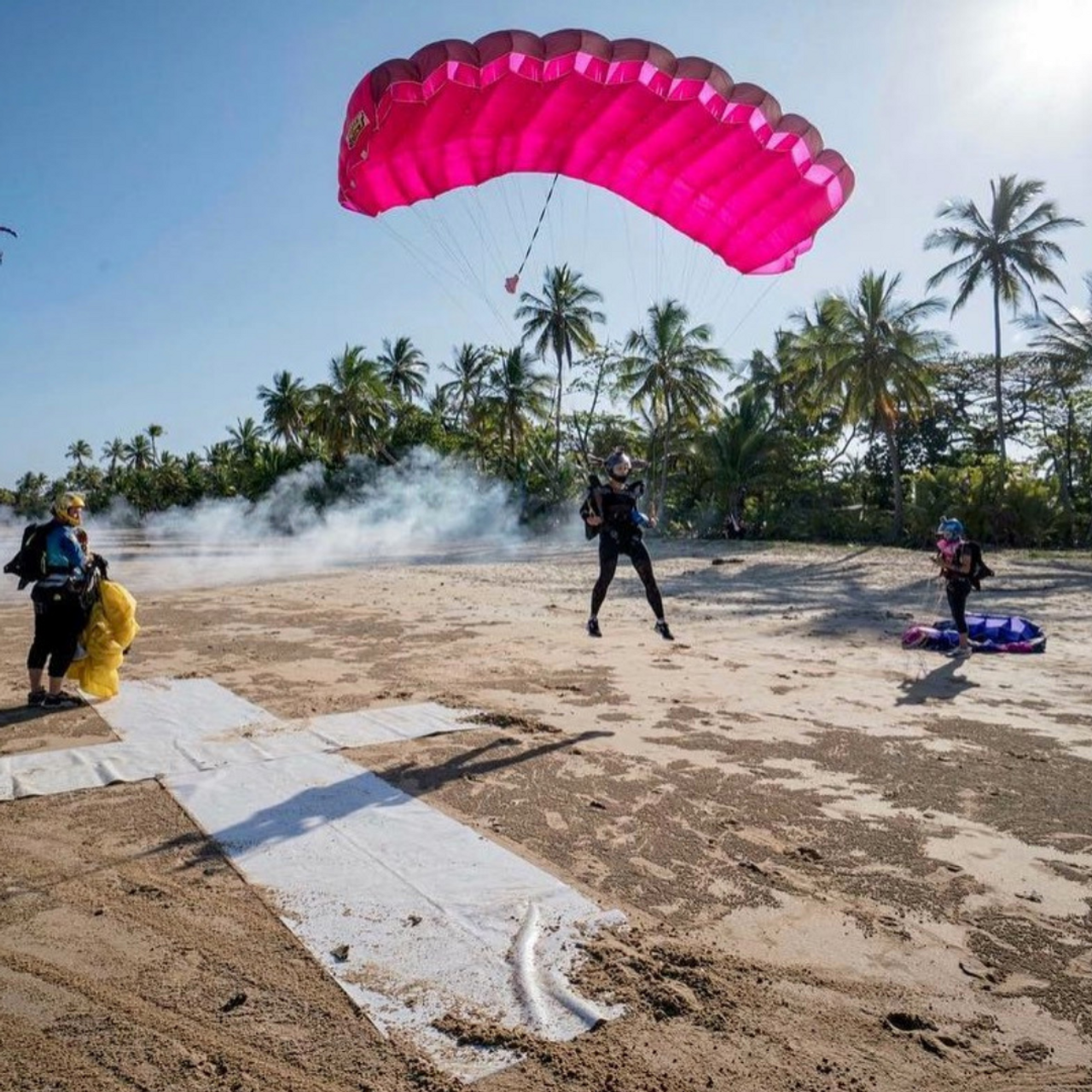



Frequently Asked Questions (FAQ) – JYRO Safire 3
Q1: Who is the JYRO Safire 3 best suited for?
The Safire 3 is designed primarily for novice to intermediate skydivers, typically those with 50 to 1000+ jumps. It offers a smooth progression from student wings, providing forgiving flight characteristics without sacrificing performance.
Q2: What sizes are available for the Safire 3?
JYRO offers the Safire 3 in multiple sizes ranging from 109 sq. ft. up to 189 sq. ft. This range accommodates a broad spectrum of exit weights and wing loadings. Consult the size chart to select the canopy that matches your weight and flying style.
Q3: How does the Safire 3 compare to other JYRO canopies?
Compared to the Crossfire 3 and Kraken, the Safire 3 provides a softer opening, greater stability, and a more forgiving flare window. It’s a versatile canopy ideal for everyday jumping and progression, while the others cater to more specialized or advanced use cases.
Q4: What type of line options are available?
The Safire 3 comes standard with durable Vectran lines, but jumpers can upgrade to HMA (High Modulus Aramid) lines for reduced drag and enhanced responsiveness. Both options are highly reliable and built for longevity.
Q5: How often should I inspect and maintain my Safire 3?
Regular inspections after every 50 jumps are recommended to check for line wear, fabric integrity, and connector hardware condition. Annual professional servicing and line replacement around 400–500 jumps will keep the canopy performing optimally.
Q6: Is the Safire 3 suitable for canopy relative work (CRW)?
The Safire 3 is not designed for CRW or contact maneuvers. For CRW, a canopy specifically built for such activities is recommended.
Q7: Can I use the Safire 3 for canopy courses?
Yes. Its predictable flight and forgiving handling make it excellent for canopy courses, coaching, and skill development.
Q8: Does the Safire 3 pack small enough for travel?
Yes. The canopy uses lightweight, compact fabric and a smart design to minimize pack volume, making it a great choice for jumpers who travel frequently.skydiving parachutes
Q9: What should I do if I experience a malfunction during flight?
If you encounter a malfunction that compromises canopy control, initiate a prompt cutaway and deploy your reserve canopy. Regular emergency procedure training is essential for all jumpers.skydiving parachutes
Q10: How does the Safire 3 perform in turbulent or windy conditions?
The Safire 3 is engineered to absorb turbulence gracefully and maintain stable flight. However, in strong or gusty winds, it’s best to adjust your flying technique, stay attentive, and if needed, avoid jumping in unsafe weather conditions.skydiving parachutes
Additional information
| Size | 90, 96, 104, 111, 117, 124, 134, 140, 150, 168, 188, 210, 230 |
|---|


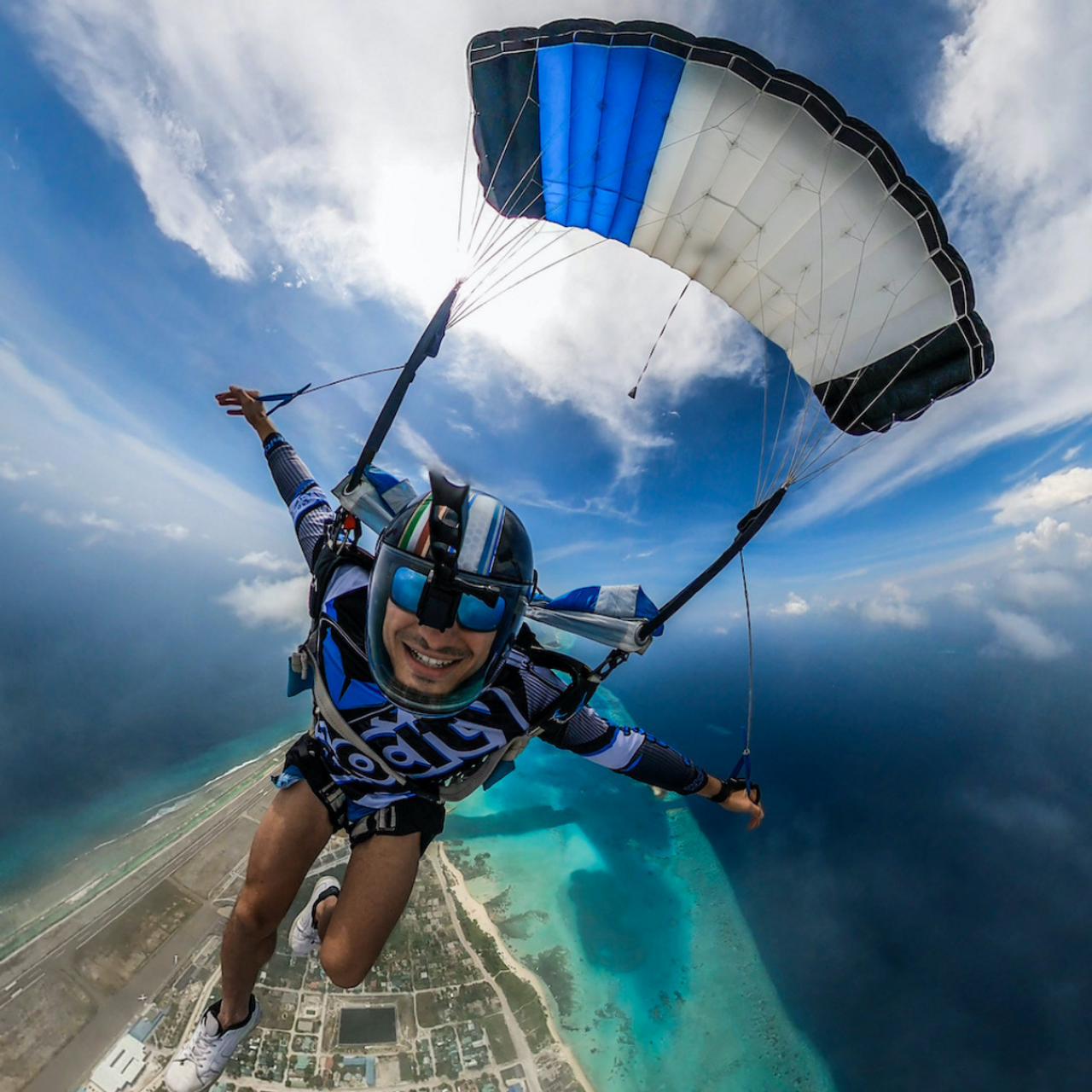
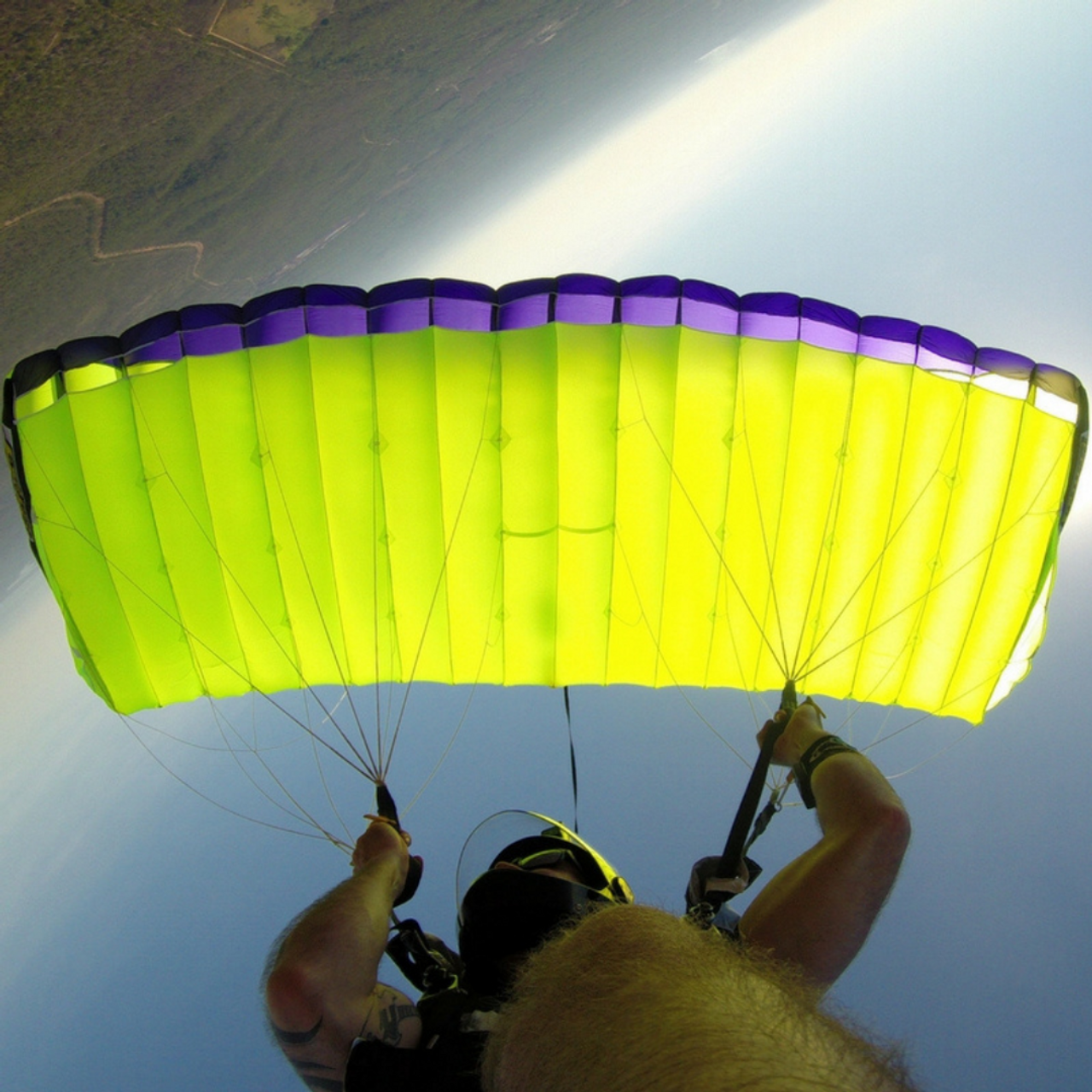
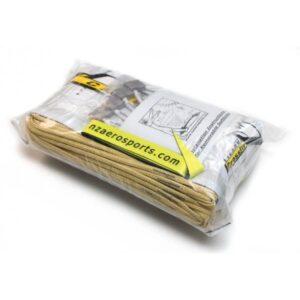
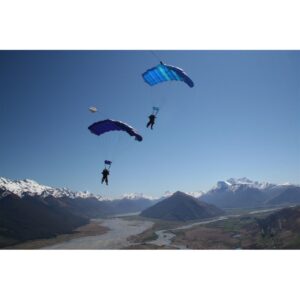

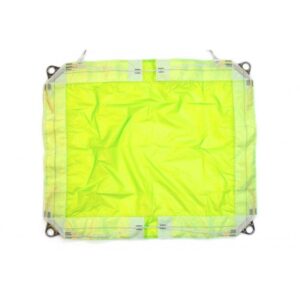
Reviews
There are no reviews yet.